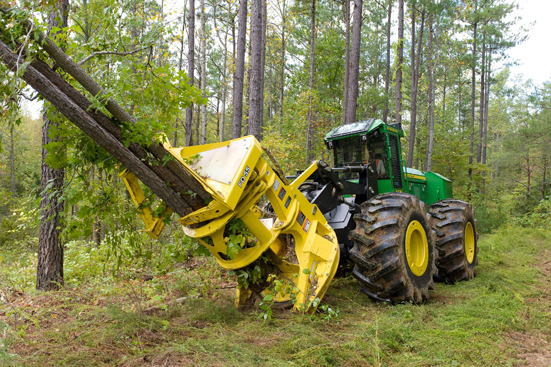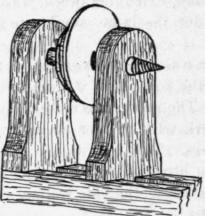FD55 Disc Saw Felling Head (DSFH)
The highly anticipated John Deere FD55 Disc Saw Felling Head (DSFH) is now available, delivering the versatility and durability loggers need to harvest various tree diameters. Available to order immediately, the FD55 felling head is compatible with the 643K and 843K John Deere Wheeled Feller Bunchers and is ideal for full-tree timber operations, from thinning to final harvests and everything in between.
The FD55 felling head is sure to boost productivity with its improved visibility to the cutting zone, high accumulation capacity, and ability to cut trees up to 23 inches in diameter. In addition, its tall horn structure design allows for more control and added stability while harvesting larger trees. “We listened and learned from loggers who frequently handle various tree diameters in the development of the FD55 disc saw,” said Neil Harber, product marketing manager at John Deere Construction & Forestry Division. “We’re confident our customers will appreciate the higher productivity rates, increased uptime and lower daily operational costs with this new versatile head.”
Engineered with extensive customer input, the FD55 delivers superior accumulation capacity through its innovative pocket design that allows for the collection of more trees due to more usable space. The pocket area is an industry leading .63 m

